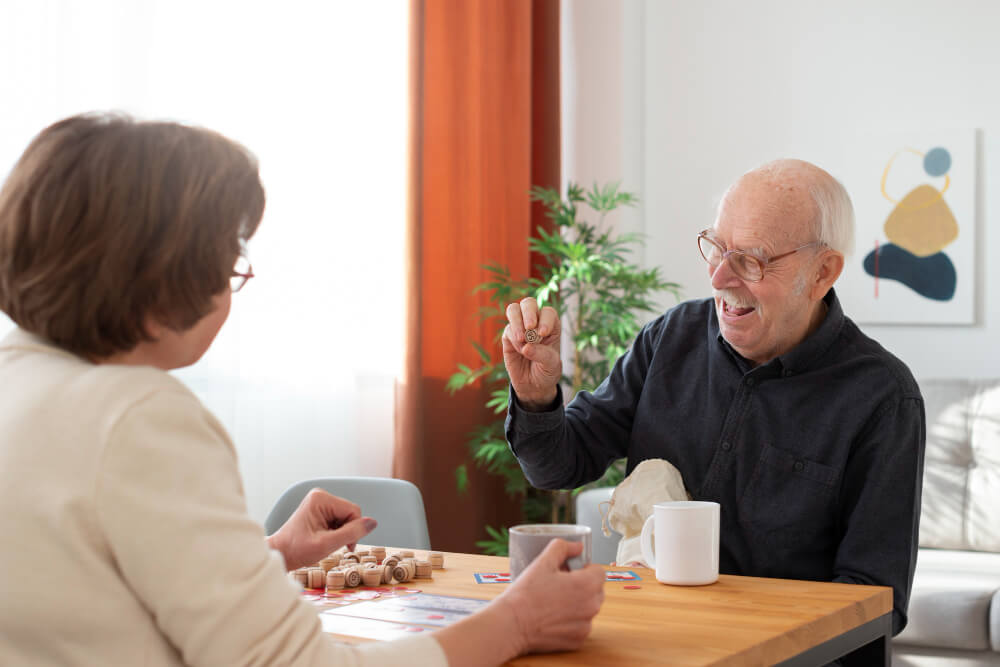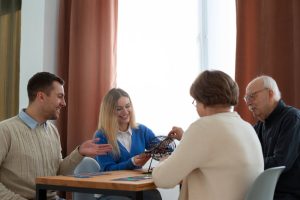Out of 6.7 million people suffering from Alzheimer’s in the USA, most of them live with their families in their homes. This fact brings to the forefront the importance of adapting the household to meet the needs of those with dementia, ensuring their environment is both safe and conducive to stimulation. Through this comprehensive blog, we are going to look at ways you can make changes in your house that make it safe for Dementia patients.
Designing a Successful Action Plan
To create a dementia-friendly home, we advocate a five-step action plan:
Assess the Home
- Identify potential hazards and areas of danger.
- Evaluate accessibility to different parts of the house.
- Address any objects that could cause injury.
Adapt Instead of Teach
- Focus on preventive precautions over reteaching.
- Identify and mitigate possible risks proactively.
Simplify Activities
- Break up tasks into simple, step-by-step activities.
- Provide ample time for the individual to complete tasks.
- Offer extra assistance for challenging activities.
Support Individual Needs
- Encourage independence and social interaction.
- Design a home that fosters meaningful activities.
- Avoid excessive restrictions that may limit autonomy.
Be Realistic about Limitations
- Acknowledge that it’s impossible to prevent every problem.
- Rely on common sense to identify potential dangers.
Tips for a Dementia-Friendly Kitchen
Organize for Accessibility
Keep frequently used items easily accessible by decluttering kitchen surfaces. Dementia patients often find it difficult to find smaller things kept in drawers, so strategically placed signs or images on cabinet doors to assist in locating smaller items.
Secure Non-Essential Items
In cases where individuals become overly focused on specific items, consider locking away or hiding non-essential items to prevent unnecessary distractions.
Adapt Utensils for Ease of Use
Age-related conditions may impact the ability to grip utensils. Address this challenge by introducing adaptive utensils, dishware, or foam tubing to enhance grips.
Improve Mealtime Experience
Create a pleasant mealtime environment by minimizing distractions, using highly visible plates, and adapting to individual food preferences. Explore our additional mealtime tips for a more enjoyable dining experience.
Tips for a Dementia-Friendly Bathroom
Highlight with Contrasting Toilet Seat
To make the toilet easily noticeable, consider adding a contrasting toilet seat cover. This simple adaptation helps individuals with dementia identify the toilet more effectively.
Enhance Sitting and Standing with a Raised Toilet Seat
Improve independence by incorporating a raised toilet seat with or without arms. This modification aids in making sitting and standing more manageable for older adults.
Toilet Target Aids for Cleanliness
For those struggling with aiming, especially individuals with low vision, use highly visible targets inside the toilet bowl. Explore creative solutions like decals or self-adhesive targets, ensuring cleanliness and reducing caregiver efforts.
Clearly Label Hot and Cold Faucets
Labeling hot and cold water taps in the bathroom is crucial for safety. Clearly mark the faucets to help individuals with dementia easily distinguish between them, promoting a safe and comfortable bathroom experience.
Tips for a Dementia-Friendly Overall Home
Declutter for Improved Visibility
Clearing away unnecessary items is crucial. By removing clutter, frequently-used items become more visible, aiding those with dementia in easily accessing what they need. Consider the arrangement of items for optimal visibility.
Contrast Colors Strategically
Contrasting colors, like using a bright color to highlight important or frequently used items on a white background, enhance object visibility. However, maintaining minimal patterns is essential to prevent visual confusion and agitation.
Leave Open Doors and Add Signs
Leaving doors open enhances navigation within the home. For better orientation, use simple signs or images on doors to guide individuals with dementia. And rooms that may not be safe for them should be locked.
Time Orientation Aids
Install an easy-to-understand clock that displays the time, day, and date in a prominent location. This, coupled with a large print calendar, aids in maintaining cognitive function. Ensure all essential information is easily accessible, as depicted in.
Positive Memory Triggers
Placing photos and keepsakes around the house that evoke positive memories creates a pleasant environment. Strategically incorporate these memory triggers to enhance the overall atmosphere.
Beyond the Physical Environment: Activities Matter
Focusing on your loved one, not just the physical space, is crucial. Effective activities bring joy, purpose, and a sense of normalcy to the elder’s life. Tailor activities to individual preferences and consider their life history when planning.
Recommendations for Meaningful Activities
- Get involved in activities.
- Engage the individual in regular household tasks.
- Challenge the brain with stimulating activities.
- Personalize activities based on the individual’s life history.
Conclusion
In conclusion, the creation of an optimal environment for memory care residents involves addressing various facets of their daily lives. By prioritizing noise reduction, enhancing outdoor spaces, ensuring dignified personal care, maintaining clutter-free living spaces, and promoting healthy eating habits, caregivers contribute significantly to the overall comfort and satisfaction of individuals living with dementia.
It is crucial for care facilities to incorporate these elements to provide the highest quality of life for their residents.






